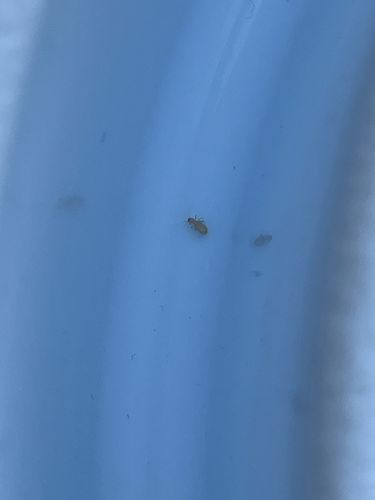Booklouse / Psocid
Scientific Name: Psocoptera (Order)
Order & Family: Order: Psocoptera, Family: Various (e.g., Liposcelididae, Psocidae)
Size: Typically 1-2 mm in length, very small and often translucent or pale in color.

Natural Habitat
Damp, secluded environments with mold or fungi. Can be found in books, papers, stored food products, walls, and other undisturbed areas inside homes, especially in high humidity.
Diet & Feeding
Feeds on microscopic mold, fungi, starch, glue (from book bindings), dead insect fragments, and other organic detritus found in damp environments.
Behavior Patterns
Generally nocturnal or cryptic, avoiding light. They thrive in high humidity and are often found in large numbers when conditions are favorable. They do not bite humans but can be a nuisance when present in large populations. They have a simple metamorphosis (egg, nymph, adult).
Risks & Benefits
Risks: Can contaminate food products and damage books, paper, and other starchy materials, especially in humid conditions. They multiply quickly and can be an indicator of underlying moisture issues in a building, which could lead to mold growth. They are not known to transmit diseases to humans. Benefits: In natural environments, they contribute to the decomposition of organic matter, acting as scavengers.
Identified on: 9/14/2025